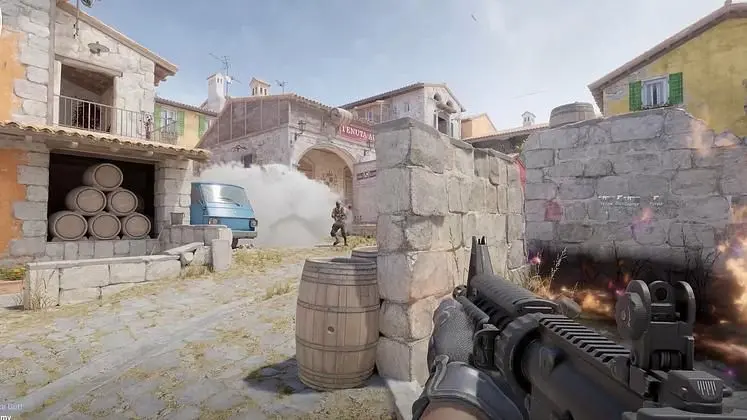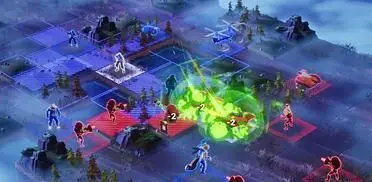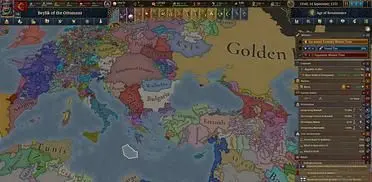Counter-Strike 2’s weapon cases can look like a simple luck pull, yet openings tend to cluster around updates, map pool changes, and esports tentpoles. For GameWatcher readers who follow live-ops cadence and patch notes across big PC games, CS2 offers a tidy case study: small changes in what the audience sees on screen can shift when and what players choose to open. This guide translates patch notes into practical signals. Weapon cases sit at the intersection of three systems: drop pools and availability, cosmetic desirability, and the broader rhythm of how CS2’s updates roll out. When any one of those changes—even slightly—the market and player behavior respond.
CS2 Cases in Plain Terms
A CS2 weapon case is a container that can be opened to reveal one cosmetic item from a fixed loot table—usually a skin for a weapon, sometimes a knife or gloves via rare tiers. Each case is defined by its contents and the unchanging rarity distribution that governs drop odds. What does change over time is the case’s availability in the drop rotation and the community’s interest in specific items, which together drive when players decide to open.
Cases matter because they connect three moving parts: the game’s update cadence, the visibility of certain weapons and maps, and the community’s taste at any given moment. When those parts align—say a rifle gets more screen time after a balance tweak and a map’s lighting makes certain finishes read better—openings for the cases that feature those looks tend to spike. That’s why timing can be more meaningful than volume. Players who follow updates often plan their openings around these windows, using streamlined platforms for CS2 case opening when the right signals line up.
How availability sets the baseline
Rarity tables inside a case are fixed once released, but availability moves over time. When a case shifts from an active drop pool into a rarer rotation, supply slows down. Newly featured cases, by contrast, see a temporary influx. Availability, meanwhile, defines how quickly interest can turn into actual openings. If a case’s supply tightens right before a content beat, the opening volume in that period can spike even if the item tier isn’t objectively better than a competitor case. Read update notes and seasonal posts with an eye for distribution changes and “active vs. rare” status, not only new finishes.
Map pool and lighting tweaks
Cosmetics are judged in context: map lighting, color grading, and materials affect how finishes appear in match broadcasts and streams. When a map enters Active Duty, an art pass lands, or a visibility tweak ships, some finishes immediately look cleaner on that map’s palette. Separately, balance changes that increase a weapon’s screen time (think recoil tuning or economy adjustments) raise the profile of that weapon’s skins.
Therefore, cases with standout versions of newly prominent weapons, or finishes that pop under updated lighting, get a visibility bump. You’ll see more clips and thumbnails featuring those looks in the days after the change. For background on how case categories work in CS, the community’s weapon cases overview is a solid reference that explains the structure behind drop pools and case collections.
Esports weeks create predictable “interest windows”
Tournament weeks compress attention and make cause-and-effect easier to track. The pattern repeats often enough to be useful:
- Pre-event positioning. In the run-up to an S-tier event, players review inventories, predict which maps will dominate, and watch creators sample openings that fit expected weapon usage.
- Mid-event amplification. A breakout strat or star performance puts specific guns on more screens. Cases featuring standout versions of those guns gain visibility quickly.
- Post-event realignment. If a balance patch lands after the final, it can reinforce the trend or flip it, redirecting attention to different weapons and cases.
The practical takeaway is simple: schedule openings in the 24-72 hours surrounding a major shift—a surprise map pick, an upset that elevates a weapon, or an immediate follow-up patch. That window captures authentic curiosity before the cycle normalizes.
New themes and model variants
When Valve introduces a fresh finish collection or a knife model, it doesn’t merely add items; it reframes the aesthetic conversation. Themes that pair well with popular agents, gloves, or stickers create cross-item combos that players like to showcase together. That leads to clusters of openings where users chase complementary looks rather than single grails.
This is why observers usually read patch trajectories: a content beat that teases a style often precedes an opening spike in the first case line to feature that style comprehensively. If a later case iterates on the theme with a cleaner execution, interest can migrate again—especially if patch notes tweak lighting, materials, or model clarity that make the newer variant read better at a distance.
Streams move faster than markets
The case market and the streaming meta form a feedback loop, but their speeds differ. A streamer can trigger a same-day surge in openings for a recently rotated or newly compelling case. Prices and long-term desirability, however, settle more slowly, especially for cases with steady supply. Players who want to time openings rather than trades pay closer attention to the stream side of that loop: it’s often the earliest signal that a case is “back.”
To keep the signal-to-noise ratio high, track who is opening what in the 48 hours after a patch or a major’s big upset. That window captures authentic curiosity rather than coordinated hype, and it often aligns with the period when cosmetic context (maps, weapon usage, lighting) has changed but hasn’t fully normalized.
The checklist: Turning notes into timing
Patch notes can be dense, and the conversation around them moves quickly. The sequence prioritizes changes that alter what viewers actually see. By focusing on a small set of observable cues, you avoid chasing every micro-change and instead act when multiple signals overlap. If an update lights up only one box below, log the note but hold your position. When two or more align, you have a clearer window to move.
- Map pool changes. Which maps were added or removed? Note their lighting and color profile. Identify finishes that read better on those maps (e.g., clean neutrals on bright layouts, bold contrasts on duskier scenes).
- Weapon usage shifts. Balance tweaks that change recoil, spread, or economy alter screen time. Link cases to the weapons likely to headline broadcasts over the next two weeks.
- Materials and rendering tweaks. Small engine notes can change how pearlescents, chromes, or matte coats look in motion. If a patch improves readability for a common finish type in a case, that case earns a watch flag.
- Distribution notes. Any move of a case between active and rarer pools changes supply. Combine that with items 1-3 to find the overlaps.
- Creator sampling. Track which cases top creators open in the first two days. Separate signal (varied creators trying the same few cases) from echo (late adopters copying yesterday’s trend).
Patch Literacy as a Playstyle
## CS2’s case ecosystem makes modern live-service rhythms visible in a way few games do. Supply shifts set the floor, context changes shape what looks good on screen, and event weeks compress attention so that small updates matter more. Start with availability to understand how quickly interest can translate into openings. Layer on visibility: which weapons will appear most in broadcasts, which maps set the palette, and whether rendering tweaks affect common finish types. Add the esports calendar to identify the short windows when curiosity peaks, then scan creator behavior. Above all, read the notes, confirm case contents, watch how the game looks on screen, and act when the changes actually alter what the audience sees.
For the latest gaming news, follow GameWatcher on BlueSky, check out our videos on YouTube, or give us a like on Facebook. We sometimes include affiliate links in our posts, which grants us a small commission, thank you. Please support independent Games Media. ❤️







